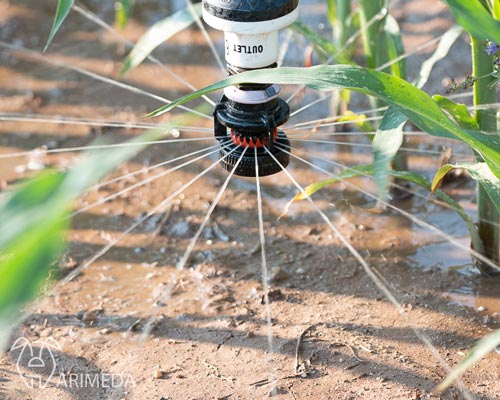LIFE ARIMEDA PROJECT (LIFE16/ENV/ES/000400) AND ITS OBJECTIVES

In the EU-28, 94 % of NH3 emissions stemmed from agriculture in 2015. Manure management and inorganic-N fertilizers play a major role in the production of these emissions with a 56% and a 21% respectively within agricultural sector (European Union emission inventory report 1990-2015 under the UNECE Convention on Long-range Transboundary Air Pollution (LRTAP), Report No 9/2017, EEA).
These emissions contribute to both negative short- and long-term impacts on the environment and human and animal health. A number of studies have confirmed that agriculture is the third most important source of primary PM10 emissions in the EU (15% of EU total emissions in 2015) and that contribute to episodes of high PM concentrations experienced across certain regions of Europe each spring (Air Quality in Europe – EEA, 2015).
The LIFE ARIMEDA project focuses its efforts towards obtaining a significant reduction in the volatilization of ammonia when the slurry is applied in crop fields as an organic fertilizer. It is intended to demonstrate that in Mediterranean agriculture the application of the liquid fraction of slurry and digestate, diluted as fertilizer through innovative irrigation systems, pivots and surface or buried drip irrigation, are effective techniques to reduce the emissions of ammonia into the atmosphere, with respect to the traditional application of splash plate.

It is expected to obtain a reduction of 50% and 90% of the ammonia emissions with pivots and drip irrigation respectively.
The aim is to value the reuse of nutrients in Mediterranean agricultural areas of extensive irrigated crops. In this way, two benefits are obtained simultaneously, a reduction of ammonia emissions and the recycling of nutrients from renewable sources, closing the nutrient cycle of the slurry.
This challenge is faced through the implementation of demonstrative trials, which will be carried out in different experimental plots of the Lombardy region in Italy and the Aragon region of Spain. The effectiveness of the fertigation systems studied will be assessed through an environmental, agronomic and economic monitoring and evaluation of the irrigation techniques tested: centre-pivots and drip irrigation.


